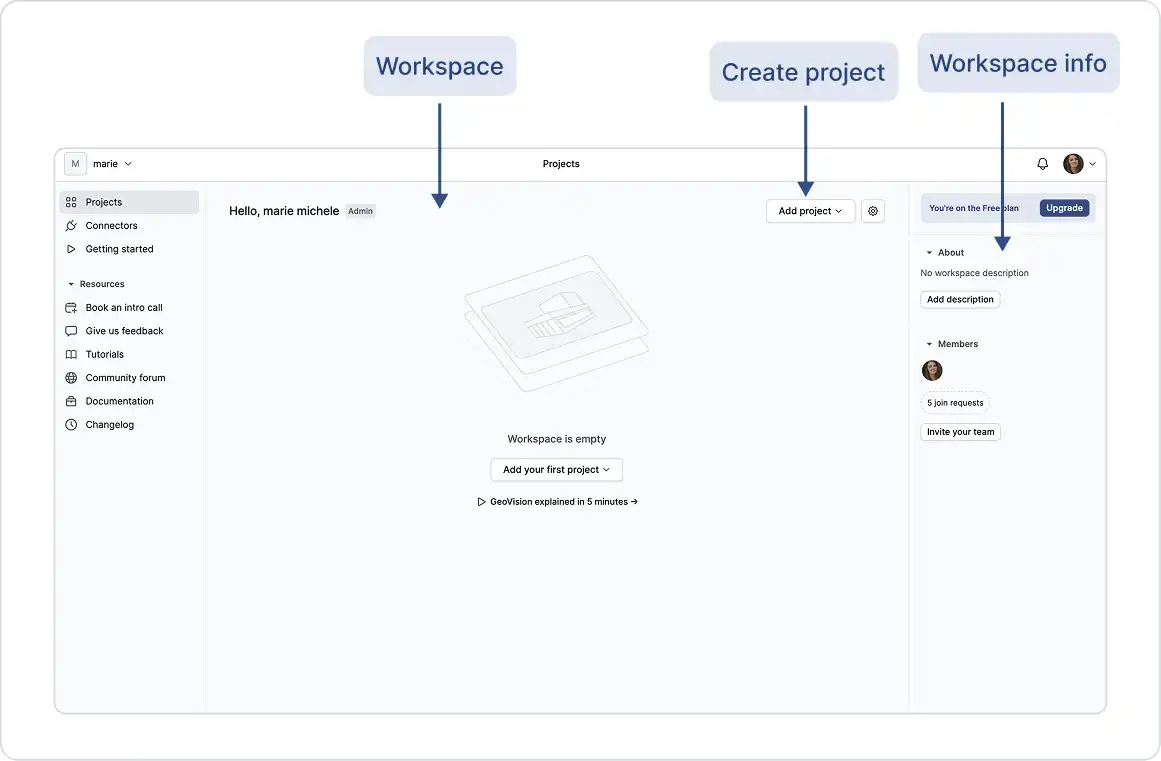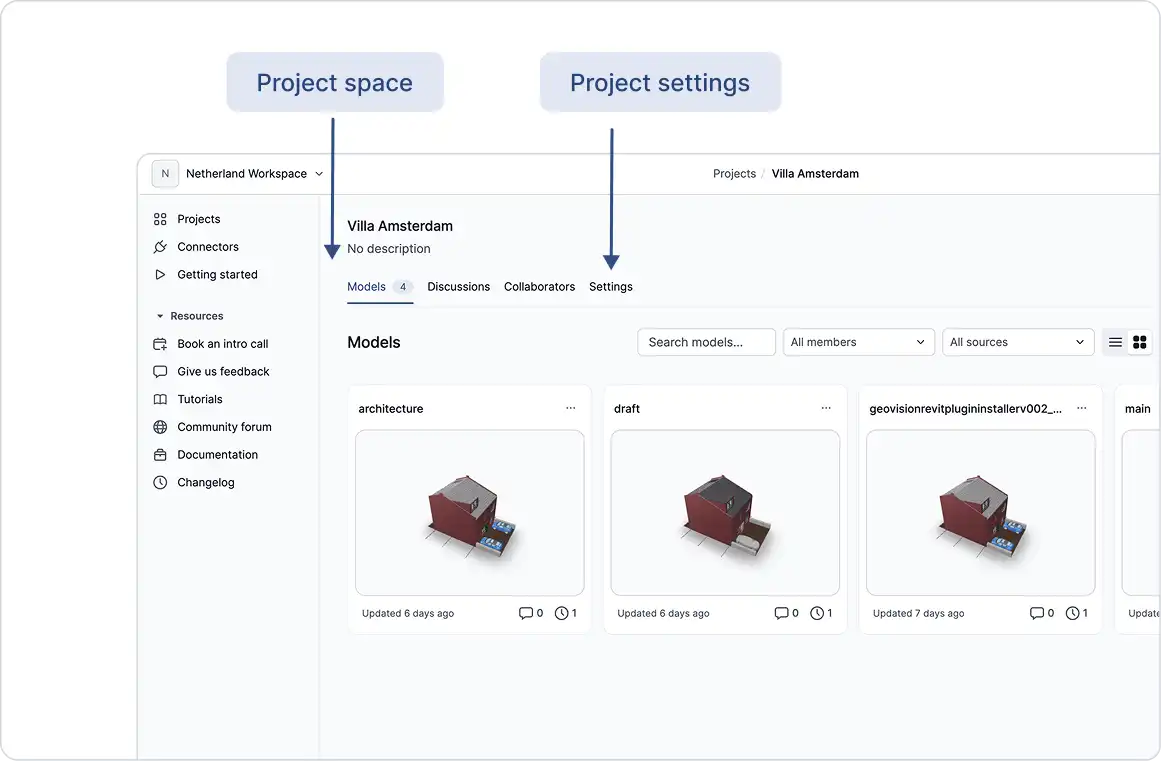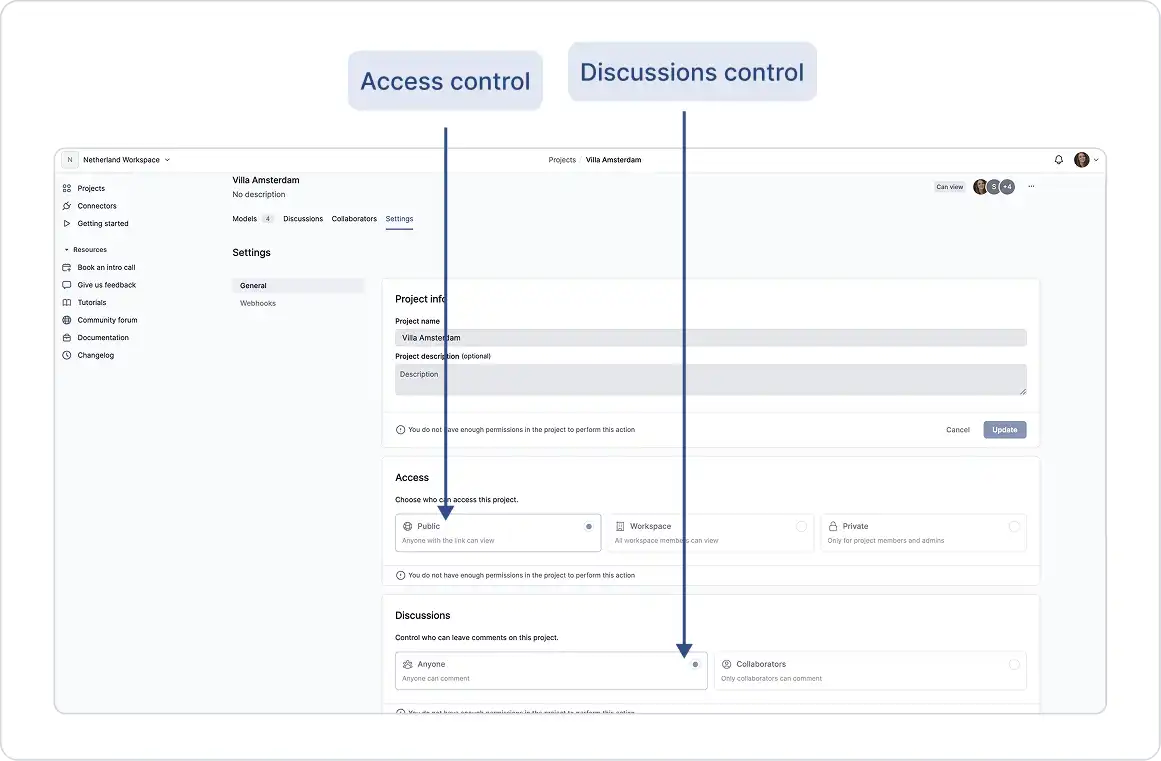What Are Projects?
In GeoVision, a project is where your data lives. Think of it as a container that helps you organize, manage, and share your work. Each project can be given a name and description, making it easier to keep everything clear and searchable.
Projects also enable team collaboration. You can share them with others and control who has permission to view or edit the content.
What Can a Project Contain?
A project can hold anything, from a few design elements to an entire building model. There’s no limit to how many projects you can create or how much data you can include.
Some examples of what a project might contain:
- A furniture item (Revit family)
- A workset or selection from Revit
- A group of objects from Rhino
- A structural model
Projects serve as containers for models and their versions. All design data exists within a specific model version. The only information stored outside model versions includes the project’s name, description, and member list. We’ll go into more detail on models and versions in the next guides.
Who Can I Share Projects With?
While workspaces have members and guests, which affect who can access projects, each project can also be shared with specific users to control access, in line with the workspace’s security settings.
Access Control
Each project has one of three visibility settings:
- Public: Anyone with the link can view the project.
- Workspace: All workspace members can view it; guests cannot.
- Private: Only project members and admins have access.
Discussions
Project discussions are managed at the project level:
- Anyone: Anyone with access to the project and a GeoVision account can comment and reply.
- Collaborators: Only users listed as project collaborators can participate.
Learn more about discussions in the Discussions guide.



